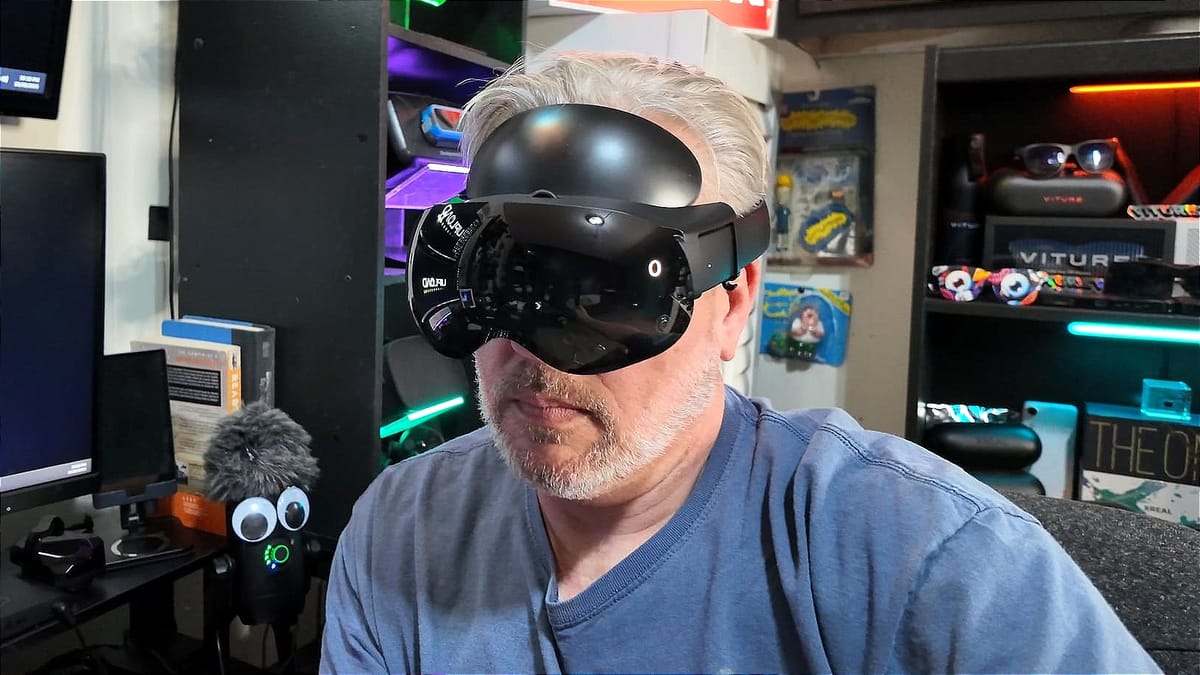A while back I was sent a Play For Dream MR headset for evaluation. While out of the box it didn’t even fit my face right, here’s how it eventually became my PC VR daily driver.
The Joy Of 4K Micro-OLED
Before I tell you how I got Play For Dream MR to fit my face, I’ll explain why I went to the effort: it’s those displays.
While the rest of my headsets have 2-3K LCD panels, Play For Dream MR has 3840×3552 micro-OLEDs, providing ultra-high resolution, deep contrast, and rich colors.
Playing older games that I’ve been experiencing for years with this headset has given them new life. It feels similar to the jump from standard definition to HD TV, where you could finally see the little details that were obscured by lower-resolution screens. Except in this case, instead of bad makeup on a performer, I notice extra details that enhance my feeling of being inside virtual worlds.
UploadVR’s Don Hopper flying the Dune Ornithopter in Microsoft Flight Simulator 2020 using the Play For Dream MR and Yaw 3 Motion Simulator
Flying the House Atreides Ornithopter in the Microsoft Flight Simulator 2020 Dune DLC, the resolution looks so crisp you would think you could count the individual grains of sand on Arrakis. Games set in outer space, such as Elite Dangerous and Star Wars: Squadrons, feel amazing before you even start piloting the ship. That’s because the stars in the distance on the other side of your cockpit glass seem to pop out of the inky black darkness.
These micro-OLED screens are incredibly sharp and produce deep contrast and colors in a way an LCD headset like Quest 3 simply can’t.
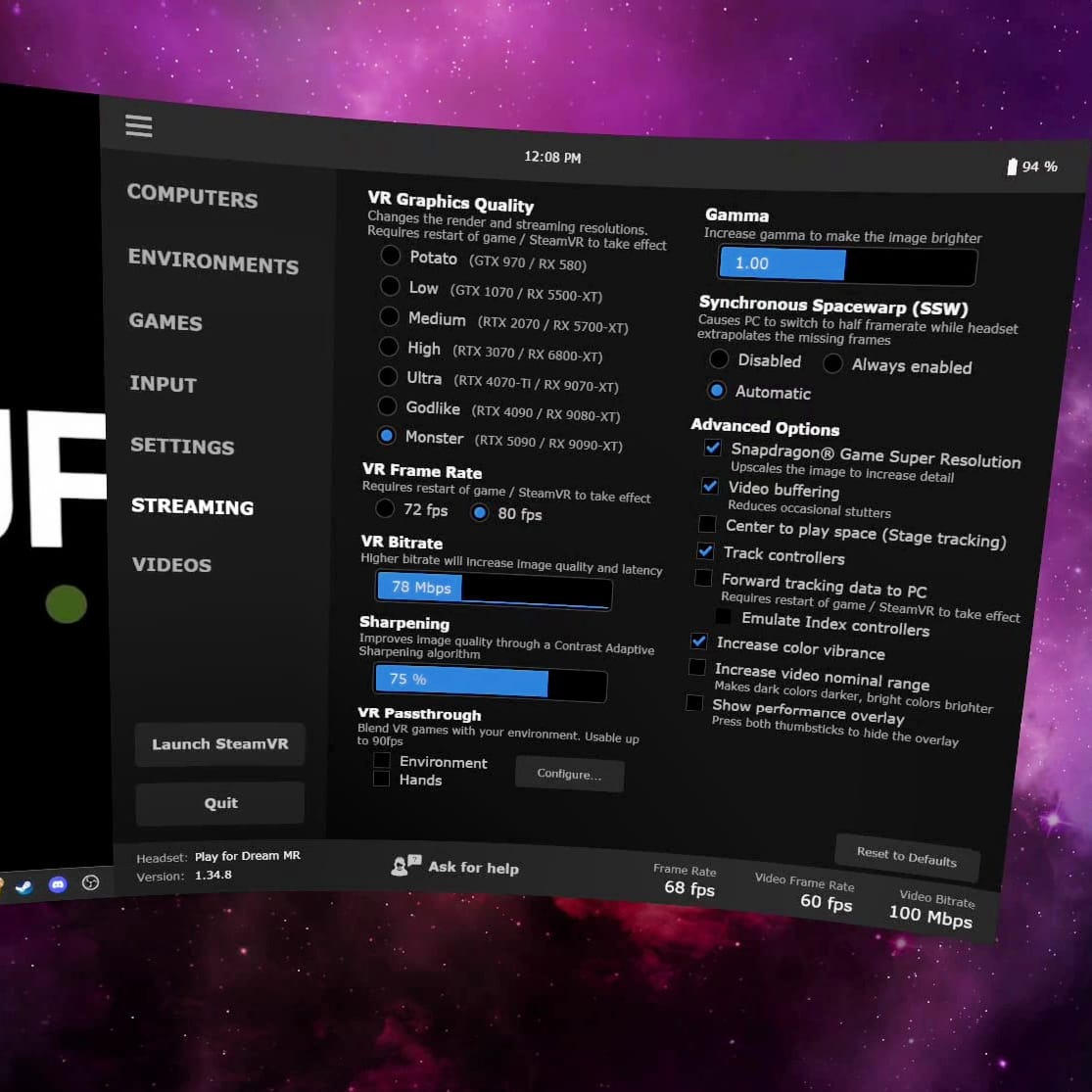 High Quality Wireless PC VR
High Quality Wireless PC VR
I’ve been impressed by the headset’s wireless display performance while using the currently-exclusive “Monster” mode in Virtual Desktop, as well as by a recent firmware upgrade that adds Steam Link Beta support with foveated transport.
After updating, the picture quality makes me forget I’m on a wireless connection and not tethered to my PC by a long DisplayPort cable – it feels almost lossless.
After playing demanding sims like Flight Simulator 2024 with the recent Jurassic World: Archipelago DLC, I can see the improvements in action firsthand; where I used to see artifacting and some slowdowns in demanding scenes, I now see none. Experiencing this new streaming tech for the first time felt like unlocking a new layer of fidelity for wireless PC VR streaming.
The Comfort Issue
Comfort is where Play For Dream really struggled for me out of the box. I immediately noticed that something felt off about the way it sat on my head because it uses a rigid, non-removable strap. In my opinion, this is just not a good idea from any manufacturer, but either way, it meant that I couldn’t adjust it to go low enough on the back of my head without it tilting off of my cheeks. Even a slight misalignment in a headset that has a small sweet spot, like the Play For Dream MR does is enough to ruin the experience by introducing distortion and blurring.
Play For Dream MR headset modded with a Bobo M3 Pro head strap, the top strap taken from a Zyber-branded Quest 2 strap, and the face pad from a Pimax Crystal. Controllers are modded with PrismXR Quest 3 straps and VELCRO squares
I was determined to fix this because after seeing those high-resolution Micro-OLED screens perfectly aligned, returning to the murky image from the LCD headsets in my collection was going to be difficult. I cobbled together what I call Franken-Dream out of pieces of other head straps, and after making the modifications, it became one of the most comfortable headsets in my collection.
After I posted my changes online, Play For Dream saw them and contacted me to say they were working on a redesigned facial interface intended to better accommodate “Western” face shapes, and they sent me a prototype. This was meant to address the issues I had experienced, but once I started using it, I noticed that while it did seem to fit my face much better, and it kept the sweet spot better aligned, something was still off. The back padding remained in a position that was too high above my occipital bone, keeping it slightly uncomfortable.
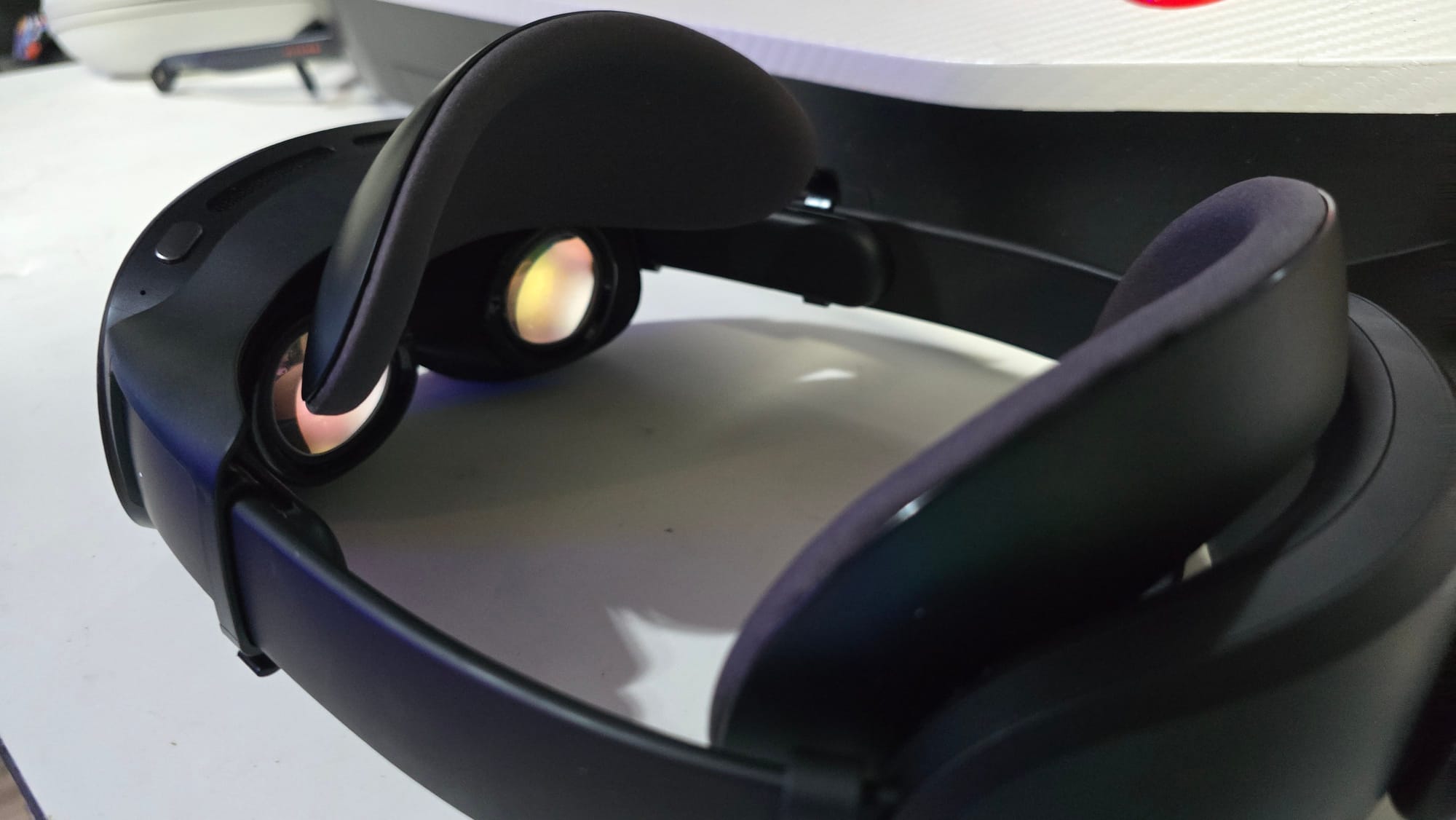
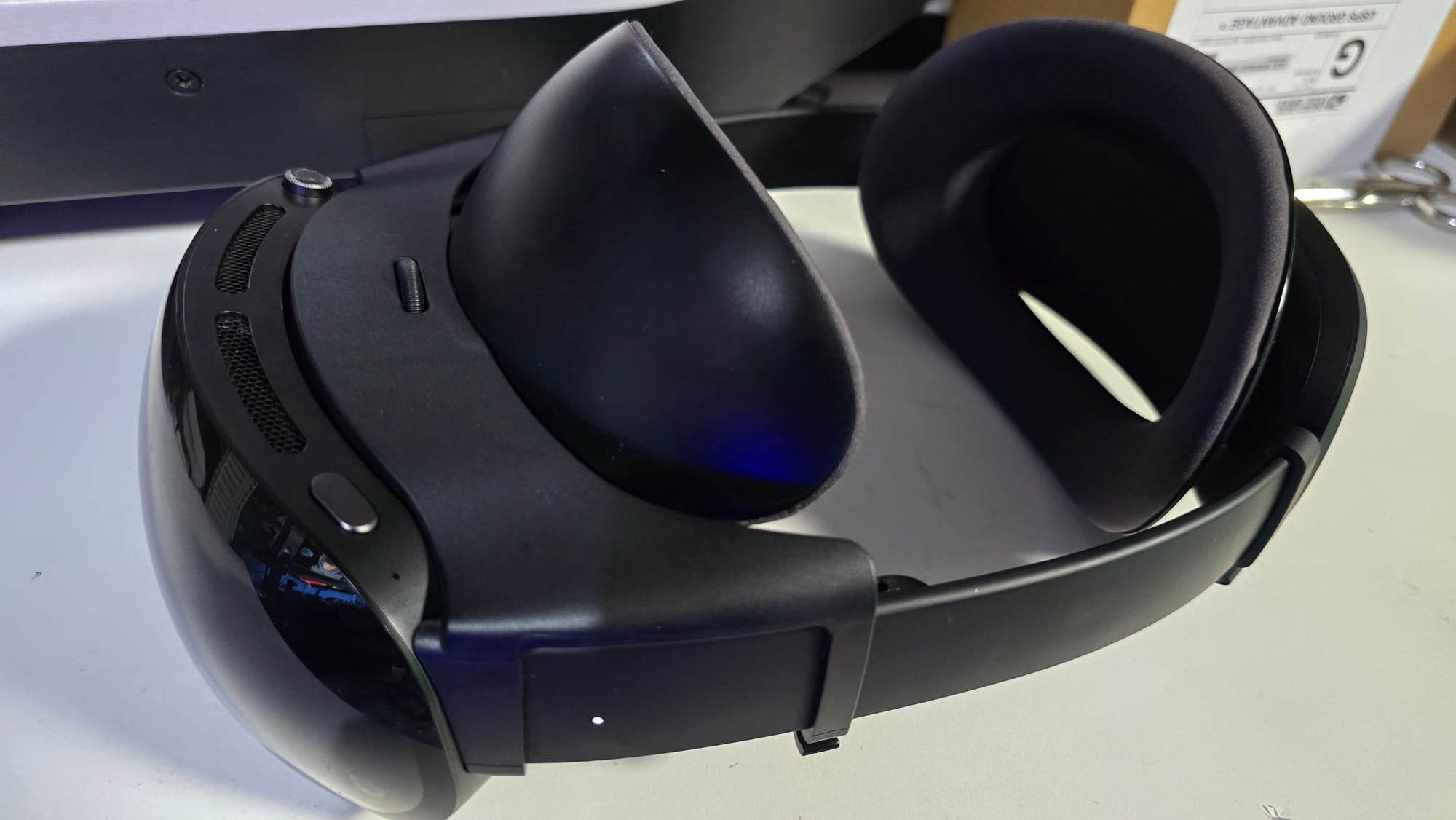
Official forehead and back padding from Play For Dream.
I used this setup for a few weeks until Play For Dream also sent the $140 optional forehead and back padding system that enables an open-periphery layout like Meta Quest Pro and Samsung’s upcoming headset. Admittedly, ever since the Quest Pro hit the scene, open-periphery facial interfaces have become my preferred way of wearing VR headsets. With this new padding in place, I could finally remove all the modifications because the headset was now properly aligned, comfortable for longer sessions, and no longer resembled the stitched-together tech version of Frankenstein’s monster.
Battery Life Issue
Play For Dream MR has a small built-in battery, providing only around one and a half hours. After I changed the settings to allow for full 4K per-eye rendering and eye tracking, I was lucky to get an hour out of it.
Using an external battery pack eliminates the issue, though you’ll need at least a 30-watt output.
Controllers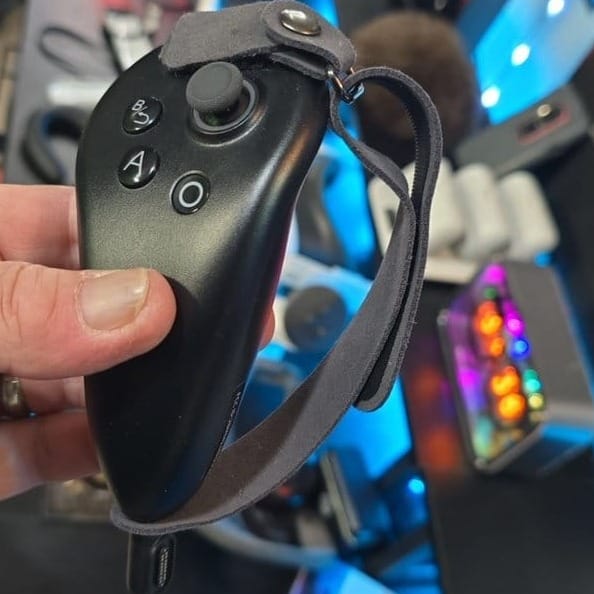 Modified Play For Dream MR controller using PrismXR straps, VELCRO squares and VITURE USB-C to Magnetic connection adapter
Modified Play For Dream MR controller using PrismXR straps, VELCRO squares and VITURE USB-C to Magnetic connection adapter
The Play For Dream MR comes with a pair of tracked controllers in the box. They are compact and lightweight, and they feel okay in my hands, but missing is a safety strapping system.
I once again modified the product using a set of knuckle straps and some hook and loop squares. I also used the USB-C magnetic connectors from a pair of display glasses as a way to attach the straps to the bottom.
Shake testing the modded knuckle straps on the Play For Dream MR controllers
These homemade knuckle straps are surprisingly comfortable and stable.
Audio Quality
In headset, the speakers built into the strap sound clear and loud enough that I haven’t felt the need to use external headphones. They lack the bass levels I want to hear when watching movies or playing games, and there’s no 3.5 mm headphone jack on the headset. If you plan on using headphones, they will need to support either a USB-C or Bluetooth connection.
As for the microphone, it should be fine for multiplayer gaming, but a wireless mic solution or a dedicated gaming headset is likely going to improve clarity.
Why PFD Is My Daily Driver
After using Play For Dream MR for just a week, when I swapped back to Quest 3, the downgrade in black levels and fine text clarity hurt. Don’t get me wrong, I can still enjoy my Quest 3. But I now find myself squinting at labels and struggling with aliasing and grayish-looking blacks while using it.
Play For Dream MR delivers top-tier visual quality and outstanding wireless PC VR performance, and these qualities have made it my PC VR daily driver. However, you might need to either buy the $140 open periphery forehead pad or extensively mod the headset yourself to make it fit your face, and because of this issue we can’t recommend it to everyone.
